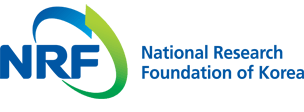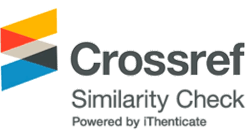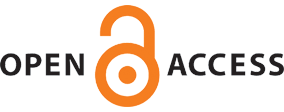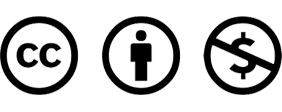Original Article
Bobb, J.F., Peng, R.D., Bell, M.L., and Dominici, F. 2014. Heat-related mortality and adaptation to heat in the United States. Environmental Health Perspectives 122: 811-816.
10.1289/ehp.130739224780880PMC4123027Baek, J.H. and Lee, S.S. 2024. Impact of heatwave persistence and wind speed on heat-related illness. Journal of the Wind Engineering Institute of Korea 28: 11-17.
10.37109/weik.2024.28.1.11Benmarhnia, T., Schwarz, L., Nori-Sarma, A., and Bell, M.L. 2019. Quantifying the impact of changing the threshold of New York City heat emergency plan in reducing heat-related illnesses. Environmental Research Letters 14: 114006.
10.1088/1748-9326/ab402eCal/OSHA. 2015. Heat illness prevention in outdoor workplaces. https://www.dir.ca.gov/dosh/HeatIllnessInfo.html. Accessed 26 November 2024.
Choi, N. and Lee, M.I. 2019. Spatial variability and long-term trend in the occurrence frequency of heatwave and tropical night in Korea. Asia-Pacific Journal of Atmospheric Sciences 55: 101-114.
10.1007/s13143-018-00101-wCoco, A., Jacklitsch, B., Williams, J., Kim, J.H., Musolin, K., and Turner, N. 2016. Criteria for a recommended standard: occupational exposure to heat and hot environments. Department of Health and Human Services Publication, National Institute for Occupational Safety and Health, Washington, D.C., USA.
Cramer, M.N., Gagnon, D., Laitano, O., and Crandall, C.G. 2022. Human temperature regulation under heat stress in health, disease, and injury. Physiological Reviews 102: 1907-1989.
10.1152/physrev.00047.202135679471PMC9394784Crenshaw, K. 1991. Mapping the margins: Intersectionality, identity politics, and violence against women of color. Stanford Law Review 43: 1241-1299.
10.2307/1229039Crenshaw, K.W. 2013. Mapping the margins: Intersectionality, identity politics, and violence against women of color. The Public Nature of Private Violence Routledge. pp. 93-118.
Eisenman, D.P., Wilhalme, H., Tseng, C.H., Chester, M., English, P., Pincetl, S., Fraser, A., Vangala, S., and Dhaliwal, S.K. 2016. Heat death associations with the built environment, social vulnerability and their interactions with rising temperature. Health & Place 41: 89-99.
10.1016/j.healthplace.2016.08.00727583525Elliott, H., Eon, C., and Breadsell, J.K. 2020. Improving city vitality through urban heat reduction with green infrastructure and design solutions: A systematic literature review. Buildings 10: 219.
10.3390/buildings10120219Gibb, K., Beckman, S., Vergara, X.P., Heinzerling, A., and Harrison, R. 2024. Extreme heat and occupational health risks. Annual Review of Public Health 45: 315-335.
10.1146/annurev-publhealth-060222-03471538166501Guo, Q., Yuan, L., Ng, C.F.S., and Hashizume, M. 2024. Evaluating Japan's revised heat-health warning system in the face of recent escalating heat stress. Environmental Research Letters 19: 054002.
10.1088/1748-9326/ad3a81Ha, J. and Kim, H. 2013. Changes in the association between summer temperature and mortality in Seoul, South Korea. International Journal of Biometeorology 57: 535-544.
10.1007/s00484-012-0580-422872184Hansen, A., Bi, P., and Saniotis, A. 2013. The effects of extreme heat on human mortality and morbidity in Australia: Implications for public health. Asia Pacific Journal of Public Health 25: 5-15
Hosokawa, Y. and Casa, D.J. 2024. Is it possible to prevent death from exertional heat stroke? In, Quick Questions Heat-Related Illness. Routledge pp. 53-56.
10.4324/9781003526124-12Howe, P.D., Marlon, J.R., Wang, X., and Leiserowitz, A. 2019. Public perceptions of the health risks of extreme heat across US states, counties, and neighborhoods. Proceedings of the National Academy of Sciences 116: 6743-6748.
10.1073/pnas.181314511630862729PMC6452713IPCC 2014. Climate Change 2014: Impacts, adaptation, and vulnerability. Contribution of Working Group II to the Fifth Assessment Report of the Intergovernmental Panel on Climate Change. Cambridge University Press, New York, USA.
IPCC 2022. Climate Change 2022: Impacts, adaptation, and vulnerability. Contribution of Working Group II to the Sixth Assessment Report of the Intergovernmental Panel on Climate Change. Cambridge University Press, New York, USA.
Joo, K.S., Kim, H.J., Lee, S.H., and Min, H.Y. 1996. A comparative study on medical utilization between urban and rural Korea. Journal of Preventive Medicine and Public Health 29: 311-329.
Kim, S.H., Song, M.J., Yoon, S.H., and Lee, D.G. 2024. Analysis of optimal index for heat morbidity. Journal of Environmental Impact Assessment 33: 9-17.
Kjellstrom, T., Freyberg, C., Lemke, B., Otto, M., and Briggs, D. 2018. Estimating population heat exposure and impacts on working people in conjunction with climate change. International Journal of Biometeorology 62: 291-306.
10.1007/s00484-017-1407-028766042KMA National Climate Data Center. 2024. KWBGT https://data.kma.go.kr/climate/windChill/selectWindChillChart.do. Accessed 26 November 2024.
Koppe, C. 2004. Heat-waves: risks and responses. In, Health and Global Environmental Change Series 2. World Health Organisation, Copenhagen, Denmark.
Korea Disease Control and Prevention Agency (KDCA) 2020. Annual report on the notified patients with heat-related illness in Korea. Korea Disease Control and Prevention Agency, Cheong Ju, Korea. https://www.kdca.go.kr/contents.es?mid=a20304010700. Accessed 26 November 2024.
Korea Disease Control and Prevention Agency (KDCA). 2021. Heat-related illness statistics. Korea Disease Control and Prevention Agency, Seoul, Korea.
Korea Disease Control and Prevention Agency (KDCA). 2022. Heat-related illness statistics. Korea Disease Control and Prevention Agency, Seoul, Korea.
Korea Disease Control and Prevention Agency (KDCA). 2023. Heat-related illness statistics. Korea Disease Control and Prevention Agency, Seoul, Korea.
Korea Meteorological Administration. 2024. Climate characteristics of summer 2024. https://www.kma.go.kr/kma/news/press.jsp?mode=view&num=1194405. Accessed 26 November 2024.
Kovats, R.S. and Hajat, S. 2008. Heat stress and public health: a critical review. Annual Review of Public Health 29: 41-55.
10.1146/annurev.publhealth.29.020907.09084318031221Krstić, G. 2011. Apparent temperature and air pollution vs. elderly population mortality in Metro Vancouver. PLoS One 6: e25101.
10.1371/journal.pone.002510121980381PMC3182192Lee, J.A., Park, J.H., and Kim, M. 2015. Social and physical environments and self-rated health in urban and rural communities in Korea. International Journal of Environmental Research and Public Health 12: 14329-14341.
10.3390/ijerph12111432926569279PMC4661651Lee, J.H. 2016. The regional health inequity, and individual and neighborhood level health determinants. Health and Social Welfare Review 36: 345-384.
10.15709/hswr.2016.36.2.345Lee, S.R. and Park, I.K. 2020. The effect of settlement inclusivity on older people's mental health. Journal of the Korean Regional Science Association 36: 3-23.
Leigh, S.B. and Won, J.S. 2004. An analysis of demand for environmental controls on different residential building types. Korean Journal of Air-Conditioning and Refrigeration Engineering 10: 960-968.
Liljegren, J.C., Carhart, R.A., Lawday, P., Tschopp, S., and Sharp, R. 2008. Modeling the wet bulb globe temperature using standard meteorological measurements. Journal of Occupational and Environmental Hygiene 5: 645-655.
10.1080/1545962080231077018668404Maule, A.L., Scatliffe-Carrion, K.D., Kotas, K.S., Smith, J.D., and Ambrose, J.F. 2024. Heat exhaustion and heat stroke among active component members of the US Armed Forces, 2019-2023. Medical Surveillance Monthly Report 31: 3.
McGregor, G. 2024. Exposure and Vulnerability as Modifiers of Heatwave Impacts. In Heatwaves: Causes, Consequences and Responses. Springer International Publishing, Switzerland. pp. 391-434.
10.1007/978-3-031-69906-1_10Mendrinos, A., O'Brien, J., Davis, M., Baldwin, A., Zaitchik, B.F., Britton, A., Mwanja, I., and Gohlke, J.M. 2024. Association between summertime emergency department visits and maximum daily heat index in rural and non-rural areas of Virginia (2015-2022). Science of The Total Environment 948: 174753.
10.1016/j.scitotenv.2024.17475339025140Morris, C.E., Gonzales, R.G., Hodgson, M.J., and Tustin, A.W. 2019. Actual and simulated weather data to evaluate wet bulb globe temperature and heat index as alerts for occupational heat-related illness. Journal of Occupational and Environmental Hygiene 16: 54-65.
10.1080/15459624.2018.153257430285564Morrissey-Basler, M.C., Brewer, G.J., Anderson, T., Adams, W.M., Navarro, J.S., Marcelino, M., Martin, D.G., and Casa, D.J. 2024. The effect of heat mitigation strategies on thermoregulation and productivity during simulated occupational work in the heat in physically active young men. Frontiers in Sports and Active Living 5: 1274141.
10.3389/fspor.2023.127414138274034PMC10808760Nam, S. 2024. The longitudinal relationship between socioeconomic status, the number of chronic disease, iADL and depression among older people: using latent growth curve modeling. Journal of the Korean Gerontological Society 44: 1-17.
10.31888/JKGS.2024.44.2.1National Weather Service. Heat Index Safety. https://www.weather.gov/safety/heat-index. Accessed 26 November 2024.
Oh, J., Kim, E., Kwag, Y., An, H., Kim, H.S., Shah, S., Lee, J.H., and Ha, E. 2024. Heat wave exposure and increased heat-related hospitalizations in young children in South Korea: A time-series study. Environmental Research 241: 117561.
10.1016/j.envres.2023.11756137951381Oka, K., He, J., Honda, Y., and Hijioka, Y. 2024. Random forest analysis of the relative importance of meteorological indicators for heatstroke cases in Japan based on the degree of severity and place of occurrence. Environmental Research 263: 120066.
10.1016/j.envres.2024.12006639341531Park, J. and Kim, O. 2015. Performance review and revitalizing support plans for rural residence though current status survey. Korean Journal of Construction Engineering and Management 16: 3-11.
10.6106/KJCEM.2015.16.2.003Park, W.S. and Suh, M.S. 2011. Characteristics and trends of tropical night occurrence in South Korea for recent 50 years (1958-2007). Atmosphere. Korean Meteorological Society 21: 361-371
Ramakreshnan, L. and Aghamohammadi, N. 2024. The application of nature-based solutions for urban heat island mitigation in Asia: Progress, Challenges, and Recommendations. Current Environmental Health Reports 11: 4-17.
10.1007/s40572-023-00427-238172471Roelofs, C. 2018. Without warning: Worker deaths from heat 2014-2016. New Solutions: A Journal of Environmental and Occupational Health Policy 28: 344-357.
10.1177/104829111877787429790832Shin, G.M. and Lee, J.S. 2018. High temperature vulnerabilities and the energy welfare system focusing on the impacts on sociodemographic groups and residential environment in Gangwon-do. SH Urban Research & Insight 8: 117-134.
10.26700/shuri.2018.12.8.3.117Steadman, R.G. 1979. The assessment of sultriness. Part I: A temperature-humidity index based on human physiology and clothing science. Journal of Applied Meteorology 18: 861-873.
10.1175/1520-0450(1979)018<0861:TAOSPI>2.0.CO;2Steadman, R.G. 1994. Norms of apparent temperature in Australia. Australian Meteorological Magazine 43: 1-16.
Uejio, C.K., Gilbert, J., Ahn, Y., Martella, L., Hu, L., and Marturano, J. 2024. Rapidly developing a community-and evidence-based heat action plan. Bulletin of the American Meteorological Society 105: E848-E863.
10.1175/BAMS-D-23-0055.1US Department of Health and Human Services. 1972. Criteria for a recommended standard: occupational exposure to hot environments. U.S. Government Printing Office, Washington, D.C., USA.
Wu, Y., Wang, X., Wu, J., Wang, R., and Yang, S. 2020. Performance of heat-health warning systems in Shanghai evaluated by using local heat-related illness data. Science of the Total Environment 715: 136883.
10.1016/j.scitotenv.2020.13688332006779Yamamoto, M., Kasai, M., Okaze, T., Hanaoka, K., and Mochida, A. 2018. Analysis of climatic factors leading to future summer heatstroke risk changes in Tokyo and Sendai based on dynamical downscaling of pseudo global warming data using WRF. Journal of Wind Engineering and Industrial Aerodynamics 183: 187-197.
10.1016/j.jweia.2018.10.001Yi, Y. and Kim, E. 2015. The effects of accessibility to medical facilities and public transportation on perceived health of urban and rural elderly: using generalized ordered logit model. Journal of the Korean Regional Development Association 27: 65-88.
Yokoi, R. 2023. Inhibition of personal protective action against heat by gender stereotypes: A Japanese survey conducted in the summer of 2023. International Journal of Disaster Risk Reduction 106: 104436.
10.1016/j.ijdrr.2024.104436- Publisher :Korean Society of Ecology and Infrastructure Engineering
- Publisher(Ko) :응용생태공학회
- Journal Title :Ecology and Resilient Infrastructure
- Journal Title(Ko) :응용생태공학회 논문집
- Volume : 11
- No :4
- Pages :186-202
- Received Date : 2024-12-03
- Revised Date : 2024-12-20
- Accepted Date : 2024-12-20
- DOI :https://doi.org/10.17820/eri.2024.11.4.186




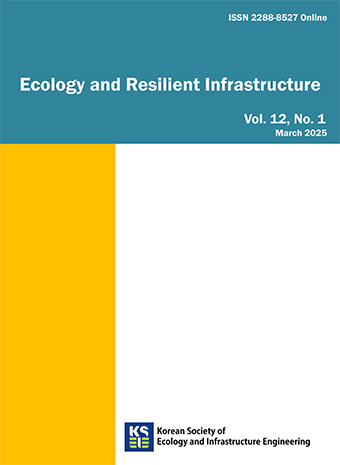 Ecology and Resilient Infrastructure
Ecology and Resilient Infrastructure
